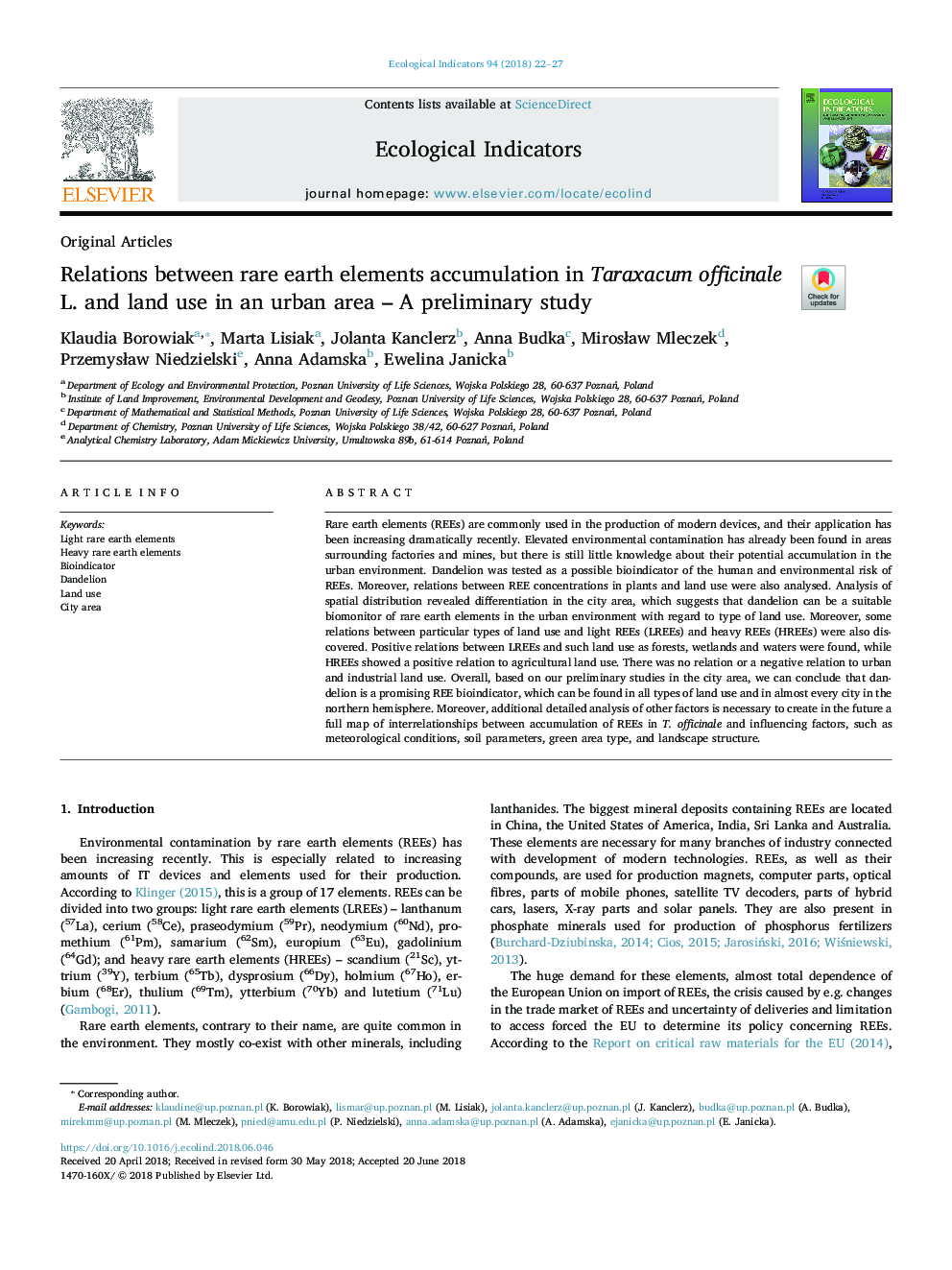| Article ID | Journal | Published Year | Pages | File Type |
|---|---|---|---|---|
| 8844973 | Ecological Indicators | 2018 | 6 Pages |
Abstract
Rare earth elements (REEs) are commonly used in the production of modern devices, and their application has been increasing dramatically recently. Elevated environmental contamination has already been found in areas surrounding factories and mines, but there is still little knowledge about their potential accumulation in the urban environment. Dandelion was tested as a possible bioindicator of the human and environmental risk of REEs. Moreover, relations between REE concentrations in plants and land use were also analysed. Analysis of spatial distribution revealed differentiation in the city area, which suggests that dandelion can be a suitable biomonitor of rare earth elements in the urban environment with regard to type of land use. Moreover, some relations between particular types of land use and light REEs (LREEs) and heavy REEs (HREEs) were also discovered. Positive relations between LREEs and such land use as forests, wetlands and waters were found, while HREEs showed a positive relation to agricultural land use. There was no relation or a negative relation to urban and industrial land use. Overall, based on our preliminary studies in the city area, we can conclude that dandelion is a promising REE bioindicator, which can be found in all types of land use and in almost every city in the northern hemisphere. Moreover, additional detailed analysis of other factors is necessary to create in the future a full map of interrelationships between accumulation of REEs in T. officinale and influencing factors, such as meteorological conditions, soil parameters, green area type, and landscape structure.
Related Topics
Life Sciences
Agricultural and Biological Sciences
Ecology, Evolution, Behavior and Systematics
Authors
Klaudia Borowiak, Marta Lisiak, Jolanta Kanclerz, Anna Budka, MirosÅaw Mleczek, PrzemysÅaw Niedzielski, Anna Adamska, Ewelina Janicka,
